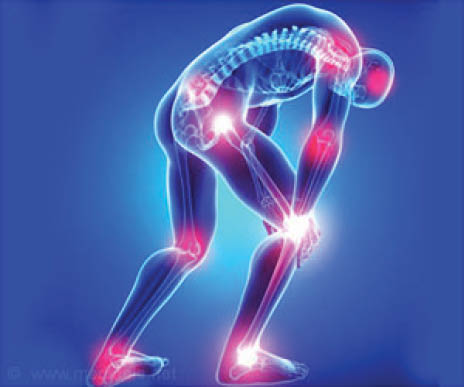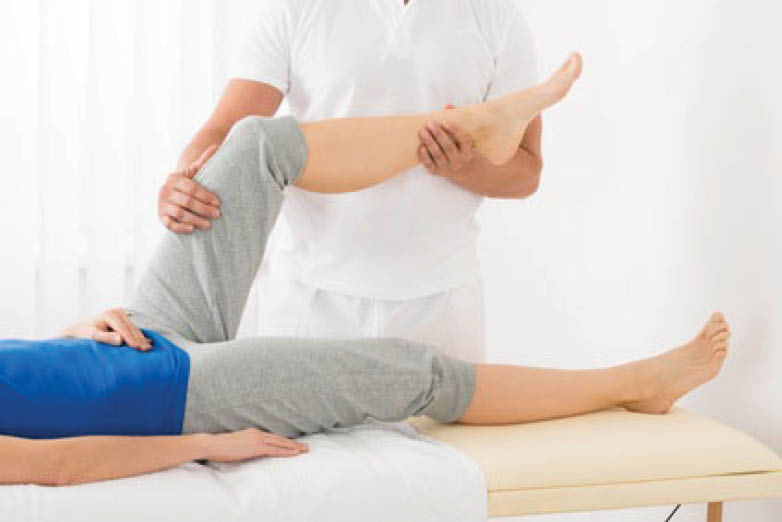Dr. Danesh D. Chinoy is a leading Health and Wellness Coach, Sports Physiotherapist and Psychologist. He is dedicated to helping all to heal holistically and remain fighting fit for life. Providing eye-opening and ground-breaking insights into Wellness, Dr. Chinoy’s two-decades’ rich expertise has won him innumerable awards, nationally and globally. His mission is to empower you to reach your highest levels of wellness/fitness. You can connect with Dr. Chinoy at: daneshchinoy@gmail.com.
 Joint pain is extremely common, particularly amongst the elderly. Many different conditions can lead to painful joints, including osteoarthritis, rheumatoid arthritis, bursitis, gout, strains, sprains and other injuries. Knee pain is the most common complaint, followed by shoulder and hip pain, but joint pain can affect any part of your body, from your ankles and feet to your shoulders and hands.
Joint pain is extremely common, particularly amongst the elderly. Many different conditions can lead to painful joints, including osteoarthritis, rheumatoid arthritis, bursitis, gout, strains, sprains and other injuries. Knee pain is the most common complaint, followed by shoulder and hip pain, but joint pain can affect any part of your body, from your ankles and feet to your shoulders and hands.
Joint pain can range from mildly irritating to debilitating. It may go away after a few days (acute), or last for several weeks (chronic). Even short-term pain in the joints can affect the quality of your life. Whatever the cause of joint pain, you can manage it with medication, physiotherapy and alternative treatments. Physiotherapy is the main stay in having supple and pain-free joints in old age.
People tend to use the term arthritis to refer to painful joints, particularly age related. Arthritis is an umbrella term for a group of disorders that affect your bones and joints. Osteo-Arthritis (OA) and Rheumatoid Arthritis (RA) are the most well-known types of arthritis. Constant wear and tear of the bones and their protective cartilages lead to osteoarthritis and it progressively worsens as you grow older. Rheumatoid arthritis is triggered by an autoimmune disorder when your immune system mistakenly attacks the body’s healthy cells. It is characterized by pain and stiffness of joints, loss of mobility and joint inflammation. The former is more common with advanced age and the latter can be triggered at almost any age.
While there is no quick fix cure for arthritis, people with joint pain can try out a few tips to help deal with the pain:
Lose Weight: Numerous people diagnosed with Osteoarthritis tend to be overweight. The sheer pain of movement can make a person suffering from arthritis think twice about exercising. They lead a sedentary life and gain more weight in the long run. This increases the pressure exerted on the joints, thus completing a vicious cycle. So, the first thing that people with joint pain should do, is focus on losing weight, if they are tip the weighing scale on the wrong end.
Physiotherapy And Exercises: Arthritis limits the joints’ range of movement and only exercise will prevent the joints from worsening. Regular physiotherapy can restore much of the lost mobility and subdue pain. I strongly recommend exercising in water. It can be as simple an exercise as walking in a chest-high water pool. Water is thought to provide many times the resistance of air. In other words, as you walk you are building and strengthening your muscles, without the additional load on the joints. Use a flotation belt to stay upright and do a simple deep-water walking. But, avoid water exercises if you are experiencing a severe rheumatoid arthritis flare-up. Also, it is advised that people who experience heavy swelling related to knee osteoarthritis wait to attempt swimming or any other water exercise that would put the joints through a lot of movement.
Water exercise is a great option for arthritis pain relief; however, I would strongly advice sessions with an expert physiotherapist to prevent complications from any pre-existing conditions.
Cold And Hot Therapy: Alternate hot and cold therapy works wonders with arthritis. If possible, start and end your day with a hot and cold shower. To do this, first take a long and soothing warm bath or soak in a hot tub mixed with some Epsom salt. Then, take a cold-water shower and make sure the afflicted joints feel the effects of both the warm and cold water. Alternately, you can try warm and cold compresses. Apply warm compresses and then alternate it with a cold ice pack.
Massage Therapy: Regular therapeutic massage of the joints affected by arthritis can, to a large extent, reduce pain and stiffness. There are plenty of ointments and gels that reduce pain and inflammation on application. Try these with essential oils for added benefits. Remember to consult your physician before you use any topical application agents, just as with any medications.
Follow A Healthy Diet: A diet rich in fresh fruits, vegetables and whole foods boosts your immune system and your overall health. There is scientific evidence that dietary choices affect people with both RA and OA. A plant-based diet provides antioxidants, which can help reduce inflammation by eliminating free radicals from the body. On the other hand, a diet rich in meat, processed foods, milk and saturated fat, added sugar and salt may aggravate inflammation, which is a characteristic of arthritis.
Added Consumption Of Turmeric: Turmeric contains a chemical called curcumin. It has anti-oxidant and anti-inflammatory properties. Research suggests it helps reduce arthritis pain and inflammation.
Alkalise Water With Baking Soda: An apple a day may keep the doctor away… but a new study also indicates that some baking soda each day may keep arthritis at bay. Baking soda is often touted for its many uses, ranging from household cleaning to dental care and more. Now, treating rheumatoid arthritis (RA) may be added to its ever-growing list of purposes.
Baking soda (sodium bicarbonate) helps the body to calm down its autoimmune response and strengthen the anti-inflammatory response. For your overall health, it’s important to maintain a proper pH balance in your body. An environment that’s too alkaline or too acidic can result in a wide array of health problems and negative physical symptoms. Research indicates baking soda can help alkalize a highly acidic environment in your body. Many holistic and naturopath doctors, as well as nutritionists, health coaches and dietitians recommend an alkaline body environment to be better than an acidic one. While that’s true in general, it’s still important to note that being too acidic or too alkaline can result in medical concerns.
I would recommend one-eighth of a teaspoon in a regular size glass of water every day. If you feel short of breath or your heart starts racing, then reduce the dosage.
Prayer And Meditation To Cope With Pain: Meditation and relaxation techniques have helped reduce the pain of arthritis by lowering stress and enabling you to cope with it better. Reducing stress helps lower inflammation and pain. Anxiety, stress and depression are common complications of conditions that involve chronic pain, such as arthritis.
Here’s wishing you all pain-free and happy joints!!
- Anatomy, Physiology And Physiotherapy: The Wacky World Inside You - 20 April2024
- Beyond Numbers: Being Kind To Your Body Post-40 - 16 March2024
- Marvels Of Lymphatic Drainage Demystified - 25 November2023
